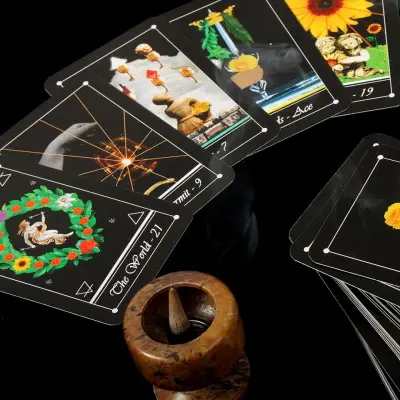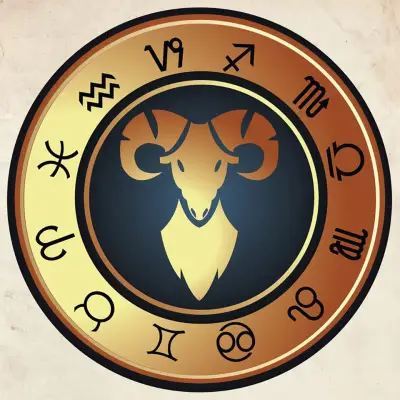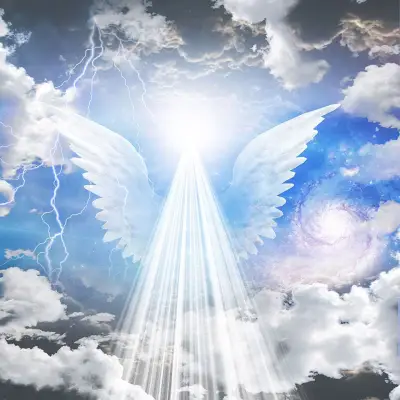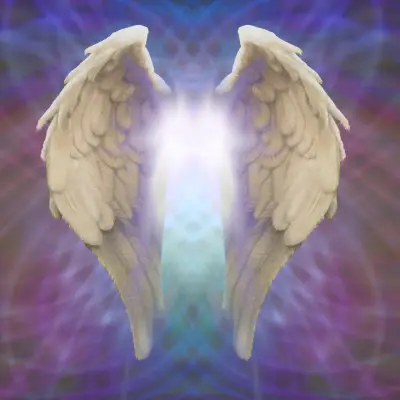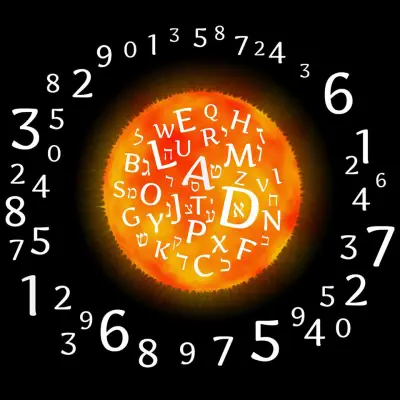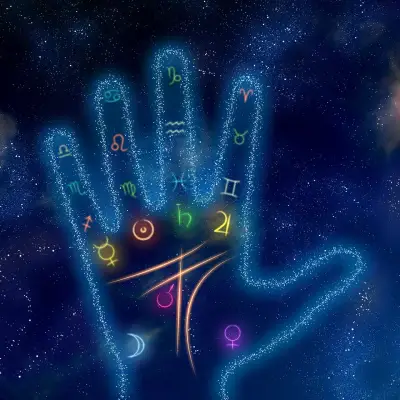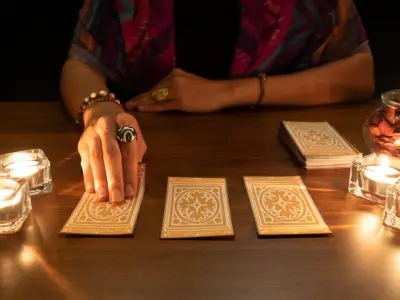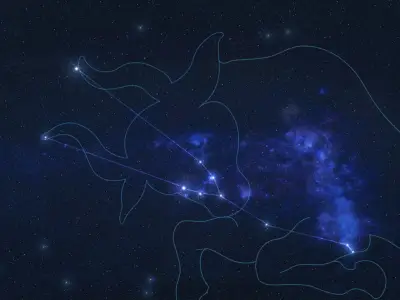Have you ever felt a deep connection with the changing seasons or wondered about the origins of holidays and how they align with nature's cycle? The Pagan Wheel of the Year offers a fascinating glimpse into how ancient traditions honour the Earth's natural rhythms and continue to inspire and guide people today.
This guide will take you through the essence of the Pagan Wheel of the Year, helping you understand its significance and how it connects us with the natural world.
Jump to:
What is the Pagan Wheel of the Year?
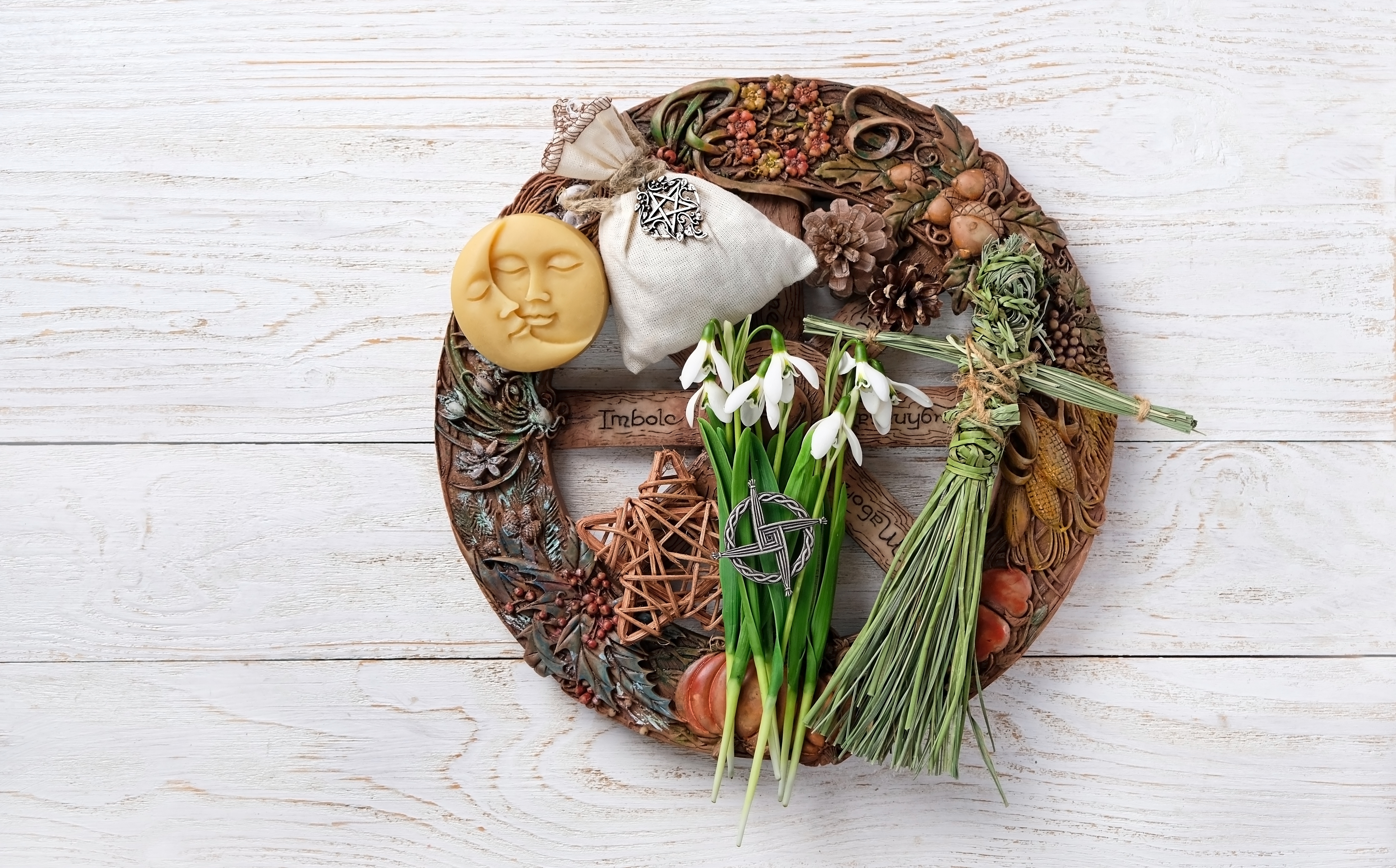
The Pagan Wheel of the Year is a calendar that marks the changing seasons and the significant midpoints between them. It consists of eight festivals, known as Sabbats, which are evenly spaced throughout the year.
These Sabbats include four solar events—the two solstices and two equinoxes—and four seasonal festivals between them. This cycle celebrates the Earth's journey around the Sun and reflects the life cycle of planting, growth, harvest, and death.
The Sabbats Wheel: Celebrating Nature's Cycle
Each of the eight Sabbats on the Wheel carries deep significance, marking the transitions between seasons and reflecting the cycle of life, death, and rebirth. Let’s delve into the rich tapestry of traditions, rituals, and meanings each festival embodies.
1. Samhain: A Time of Remembrance and Renewal
Samhain, celebrated on October 31st, marks the end of the harvest and the beginning of winter. This festival is deeply rooted in the theme of transition, serving as the Pagan New Year. It’s a powerful time for reflection on the past and the cycle of life and death.
Traditionally, it's a time to honour ancestors and loved ones who have passed, acknowledging their impact on your life and the continuous circle of life and death. Samhain is celebrated with bonfires, feasting, and rituals to remember the dead, reflecting on the impermanence of life and the importance of the ancestral legacy.
2. Yule: The Rebirth of Light
Yule, occurring at the Winter Solstice around December 21st, celebrates the longest night and the rebirth of the Sun. This festival symbolises hope, renewal, and the return of light to the world.
As the Sun's warmth begins to return and promise the coming spring, people celebrate by lighting candles, gathering around fires, and decorating their homes with symbols of the Sun and evergreens to represent everlasting life. Yule is a time of joy and festivity, where the darkness gives way to the light, reminding us of the resilience of life and the warmth that lies ahead.
3. Imbolc: Welcoming the First Signs of Spring
Imbolc, celebrated on February 1st, heralds the early signs of spring. This Sabbat is associated with cleansing, renewal, and preparing for new beginnings. It’s a time to clear away the old and make space for new growth and possibilities.
Traditionally, Imbolc is a time to honour the goddess Brigid, the bringer of spring, with rituals of purification, the lighting of candles, and the celebration of the burgeoning strength of the Sun. It’s a reminder that even in the depths of winter, life stirs beneath the surface, ready to burst forth.
4. Ostara: A Celebration of Balance and Renewal
Ostara, the Spring Equinox, falls around March 21st when day and night are of equal length. This festival celebrates fertility, rebirth, and new beginnings, symbolising the balance of light and dark and the emergence of life from the grip of winter.
Ostara is marked by the decorating of eggs, a symbol of fertility and new life, planting seeds, and welcoming the budding of trees and flowers. It’s a time of joyous celebration, embracing the renewal of the Earth and the endless cycle of growth and rebirth.
5. Beltane: The Fire of Fertility and Growth
Beltane, celebrated on May 1st, marks the beginning of summer with vibrant displays of fire, symbolising the Sun's growing strength and the fertility of the Earth. This festival is characterised by bonfires, maypole dances, and rituals to promote fertility, growth, and prosperity.
Beltane is a time of passion and celebration, embracing the abundance of life and the vibrant energy of the Earth in full bloom.
6. Litha: Honouring the Sun’s Peak
Litha, the Summer Solstice around June 21st, celebrates the longest day of the year and the Sun at its maximum strength. This Sabbat honours the fullness of life, abundance, and the power of the Sun.
Celebrations include bonfires, feasting, and rituals to harness the Sun's energy for growth and prosperity. Litha is a time of empowerment, joy, and taking action, reflecting on the abundance of life and the bounty of the Earth.
7. Lammas or Lughnasadh: The First Harvest
Celebrated on August 1st, Lammas or Lughnasadh marks the beginning of the harvest season. This festival is a time of thanksgiving for abundance and the first fruits of the harvest.
Traditionally, it involves bread-making, offerings of the first crops, and rituals of gratitude. Lammas is a time to acknowledge the fruits of our labours and the generosity of the Earth, sharing our bounty with others in a spirit of community and gratitude.
8. Mabon: A Time of Balance and Gratitude
Mabon, the Autumn Equinox around September 21st, brings another point of balance with day and night of equal length. This festival is a time of reflection, balance, and deep gratitude for the harvest.
Celebrations include feasting on the abundance of the harvest, sharing with others, and preparing for the coming winter. Mabon is a moment to appreciate the bounty of the Earth, the beauty of life, and the balance that sustains us all.
The Three Main Pagan Festivals
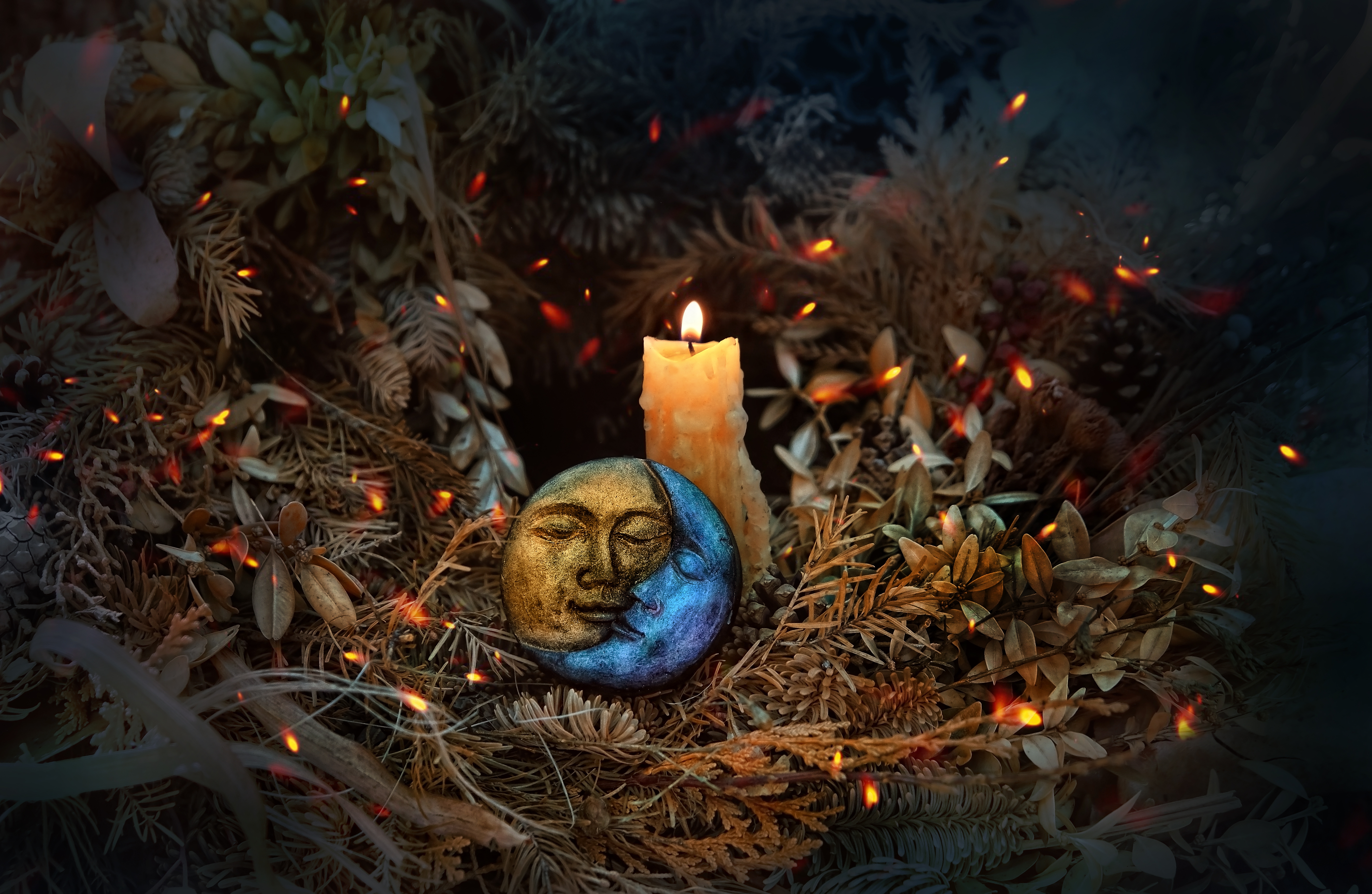
While all eight Sabbats are significant, Samhain, Beltane, and Yule often stand out due to their profound cultural and spiritual meanings. These festivals, with their focus on life, death, and rebirth, encapsulate the essence of the Pagan understanding of the world.
Pagan Beliefs and Practices
Pagans hold diverse beliefs, but a common thread is respect for nature and the Earth. The Wheel of the Year manifests this belief, demonstrating the interconnection of all life and the importance of living in harmony with the Earth's cycles.
Days Named After Pagan Gods
- Sunday: Named after the Sun, this day is dedicated to the Sun god in many pagan traditions. In Latin, it's "dies Solis," meaning "day of the Sun." The name reflects the worship and reverence of the Sun as a powerful deity.
- Monday: Named after the Moon, this is "Moon's Day." In Latin, it's "dies Lunae," reflecting the ancient celebration of the Moon's significance in pagan cultures for its influence on the tides and agricultural cycles.
- Tuesday: Named after the Norse god Tyr (or Tiw), associated with war and sky. In Latin, this day was "dies Martis," dedicated to Mars, the Roman god of war, reflecting the common thematic link to combat and bravery.
- Wednesday: Named after Odin (or Woden), the chief Norse god associated with wisdom, healing, and knowledge. The Latin name "dies Mercurii" refers to Mercury, the messenger god, highlighting themes of communication and travel.
- Thursday: Named after Thor, the Norse god of thunder, strength, and protection. The Latin "dies Iovis" is dedicated to Jupiter (or Jove), the king of the gods, symbolising power and authority.
- Friday: Named after the Norse goddess Frigg (or Freya), associated with love and fertility. In Latin, "dies Veneris" refers to Venus, the goddess of love and beauty, focusing on relationships, fertility, and aesthetic pleasures.
- Saturday: The only day of the week in English still directly named after a Roman deity, Saturn, the god of wealth, liberation, and time. "Dies Saturni" in Latin reflects the day's connection to the end of the traditional week, a time for rest and reflection.
Connecting with Nature Through the Wheel
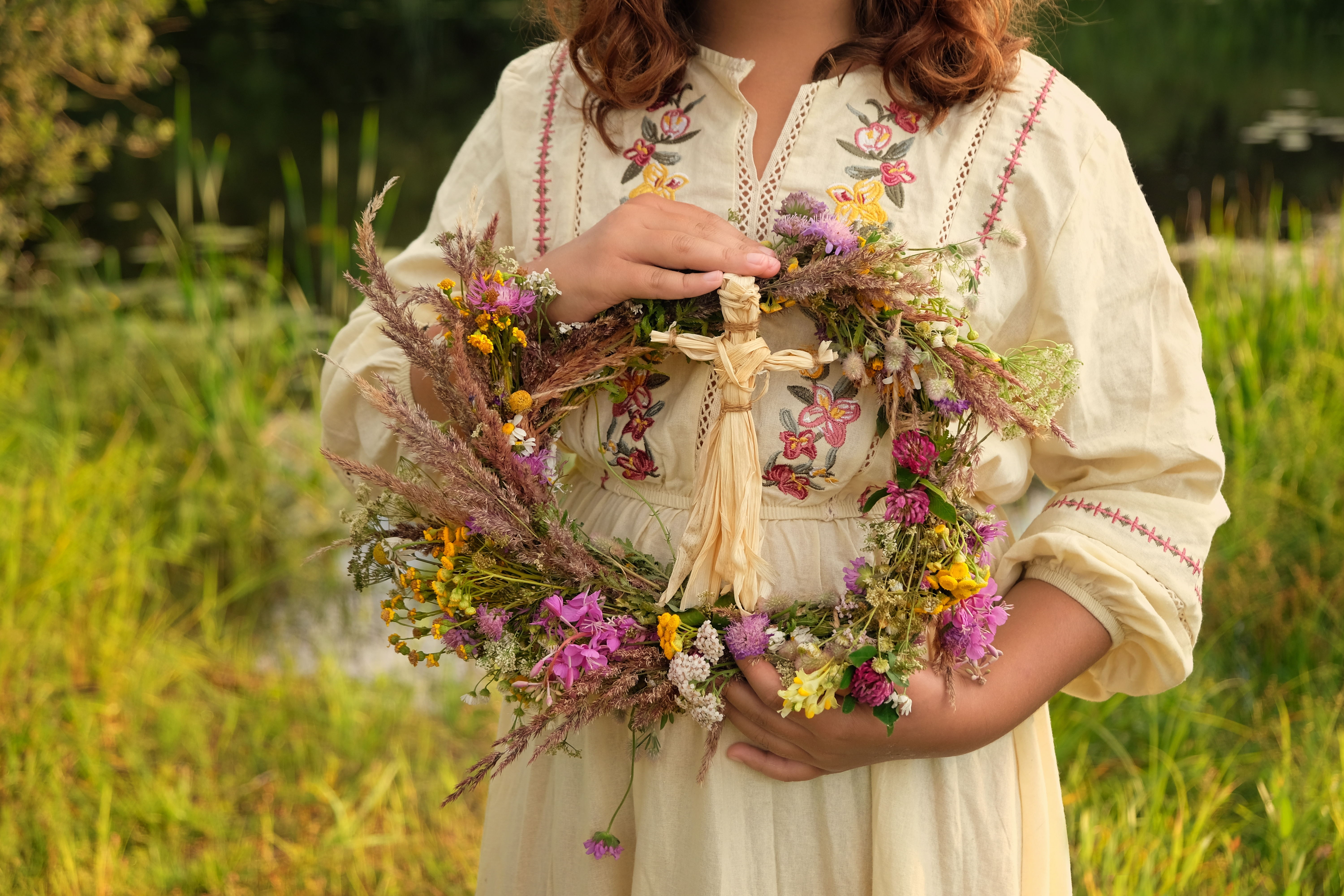
The Wheel of the Year also highlights the importance of plants and their roles in each festival. From the oak and holly kings' battle at Yule to the harvest wreaths of Lammas, plants play a central role in celebrating and understanding the cycle of the year.
Holidays with Pagan Roots
Many modern holidays have their roots in Pagan traditions, from Christmas and Easter borrowing from Yule and Ostara to Halloween's connections with Samhain. These connections highlight the deep influence of Pagan celebrations on our collective cultural heritage:
Christmas and Yule: A Celebration of Light and Rebirth
The festive season of Christmas, with its array of lights, trees, and gift-giving, owes much of its warmth and splendour to the Pagan festival of Yule. Celebrated during the Winter Solstice, Yule is a time of darkness giving way to light, symbolising the rebirth of the Sun and the promise of brighter days ahead.
Ancient Pagans would light bonfires and candles, and decorate their homes with evergreens to ward off spirits and celebrate the return of life. These customs mirror the modern Christmas traditions of lighting up homes and cities and the iconic Christmas tree, a testament to the enduring legacy of Yule's celebration of life and light.
Easter and Ostara: Renewal and Rebirth
Easter, with its themes of resurrection and renewal, draws from the wellspring of Ostara, the Pagan festival that celebrates the Spring Equinox. Ostara is a time of balance, when day and night are equal, beckoning spring's arrival and the Earth's awakening from its winter slumber.
The symbols of Ostara, such as eggs and rabbits, are potent representations of fertility and new beginnings, seamlessly woven into Easter traditions. The Easter egg, a symbol of life and rebirth, directly echoes the Pagan customs of decorating eggs to honour the fertility of the Earth and the renewal of life.
Halloween and Samhain: Honouring the Ancestors
Halloween's ghoulish costumes, jack-o'-lanterns, and themes of the supernatural are deeply rooted in the ancient festival of Samhain. This sacred time marks the end of the harvest and the beginning of the darker half of the year when the veil between the worlds is believed to be at its thinnest.
Ancient Pagans would light bonfires, don masks and costumes to ward off spirits, and leave offerings for the dead. These practices have evolved into the modern Halloween traditions of dressing in costumes, carving pumpkins, and honouring the thin line between the living and the spirit world. Halloween's focus on the eerie and the otherworldly reflects Samhain's emphasis on the cyclical nature of life, death, and rebirth.
Recommended for you!
Best SellersFrequently Asked Questions (FAQs) about the Pagan Wheel of the Year
What exactly is the Pagan Wheel of the Year?
The Pagan Wheel of the Year is a calendar that outlines eight festivals, known as Sabbats, celebrating the Earth's natural cycles of birth, life, death, and rebirth. These festivals are deeply rooted in ancient traditions honouring the changing seasons and the Earth's fertility.
Who celebrates the Wheel of the Year?
The Wheel of the Year is primarily celebrated by Pagans, including Wiccans, Druids, and other Earth-based spiritualities. However, its themes of nature, renewal, and gratitude have universal appeal, attracting people from various backgrounds interested in connecting more deeply with the natural world.
Can I celebrate the Wheel of the Year if I'm not Pagan?
Anyone can celebrate the Wheel of the Year or incorporate elements of its festivals into their lives. It's a beautiful way to honour the changing seasons, reflect on personal growth, and foster a deeper connection with nature.
What are the eight Sabbats of the Wheel of the Year?
The eight Sabbats include four solar events — the two solstices (Yule and Litha) and the two equinoxes (Ostara and Mabon) — and the four midpoints between them, which are Samhain, Imbolc, Beltane, and Lammas (or Lughnasadh).
How do Pagans celebrate these Sabbats?
Celebrations vary widely but often include rituals, feasting, storytelling, crafting, and spending time in nature. Each Sabbat has its unique traditions that reflect its specific themes and the time of year it occurs.
What is the significance of the Sabbats?
Each Sabbat marks a point in the Earth's journey around the Sun, reflecting the cycle of life. These festivals honour the themes of birth, growth, death, and rebirth, teaching us about the impermanence of life and the importance of the natural world.
Do I need special tools or knowledge to celebrate the Wheel of the Year?
You don't need any special tools or prior knowledge. Celebrating the Wheel of the Year can be as simple as lighting a candle, spending time in nature, or reflecting on the changes within yourself and the world around you. Many find that learning about the traditions and symbolism associated with each Sabbat enriches their experience.
Where can I learn more about the Wheel of the Year, and how can I celebrate it?
Many resources are available for those interested in learning more about the Wheel of the Year, including books, websites, and courses those offered by Centre of Excellence. These resources can provide you with historical context, practical tips for celebration, and deeper insights into the spiritual significance of each festival.
Study Pagan Traditions With Centre of Excellence
Dive into the ancient rhythms of the Earth with our Wheel of the Year Diploma Course.
What You'll Discover
- Rich Historical Context: Uncover the origins and meanings behind the Pagan Wheel of the Year, learning how these timeless traditions came to be and their significance through the ages.
- Seasonal Celebrations: Delve into the unique rituals and customs of each of the eight Sabbats, from Samhain's reflective reverence to Beltane's vibrant festivities.
- Spiritual Connection: Gain insights into how these ancient celebrations foster a deeper bond with the natural world, enhancing your spiritual practice and daily life.
- Cultural Influence: Explore the impact of Pagan festivals on modern holidays, understanding the interconnectedness of past and present traditions.
- Empowering Knowledge: Whether you're seeking personal growth or considering incorporating Pagan practices into your life, this course equips you with the knowledge to confidently explore these paths.
Exclusive Invitation
We're delighted to present our Wheel of the Year Diploma Course at a special discounted rate of £29, saving you over £100!

